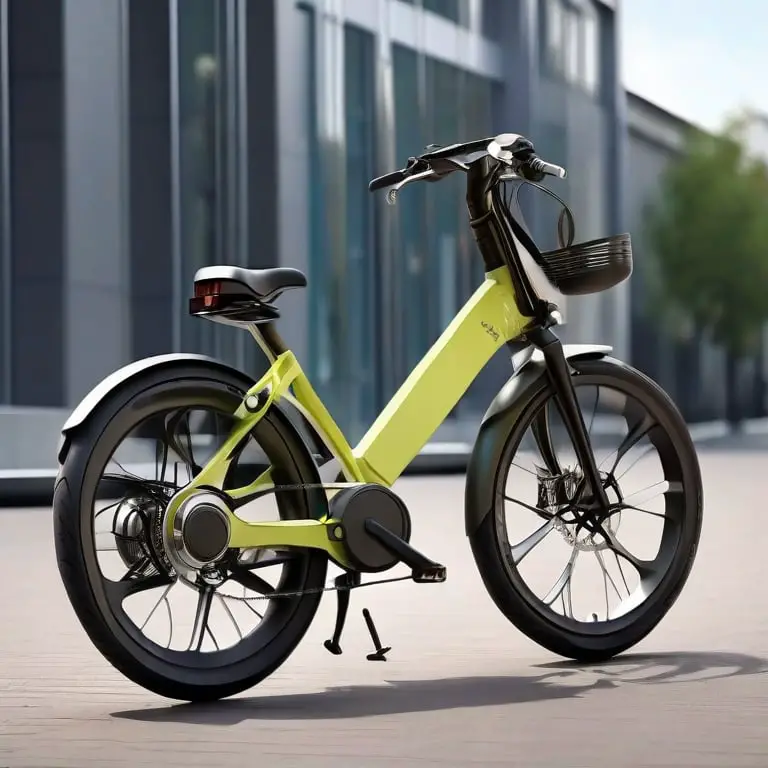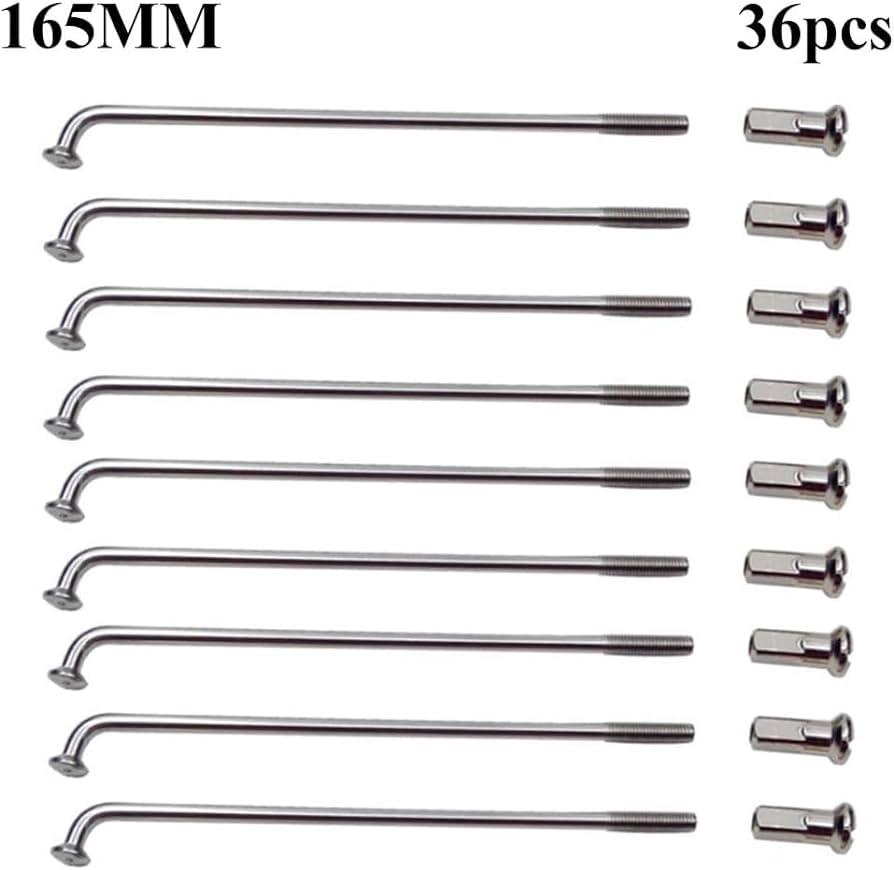Mtb Spoke Count Secrets: Boosting Your Ride’s Performance!
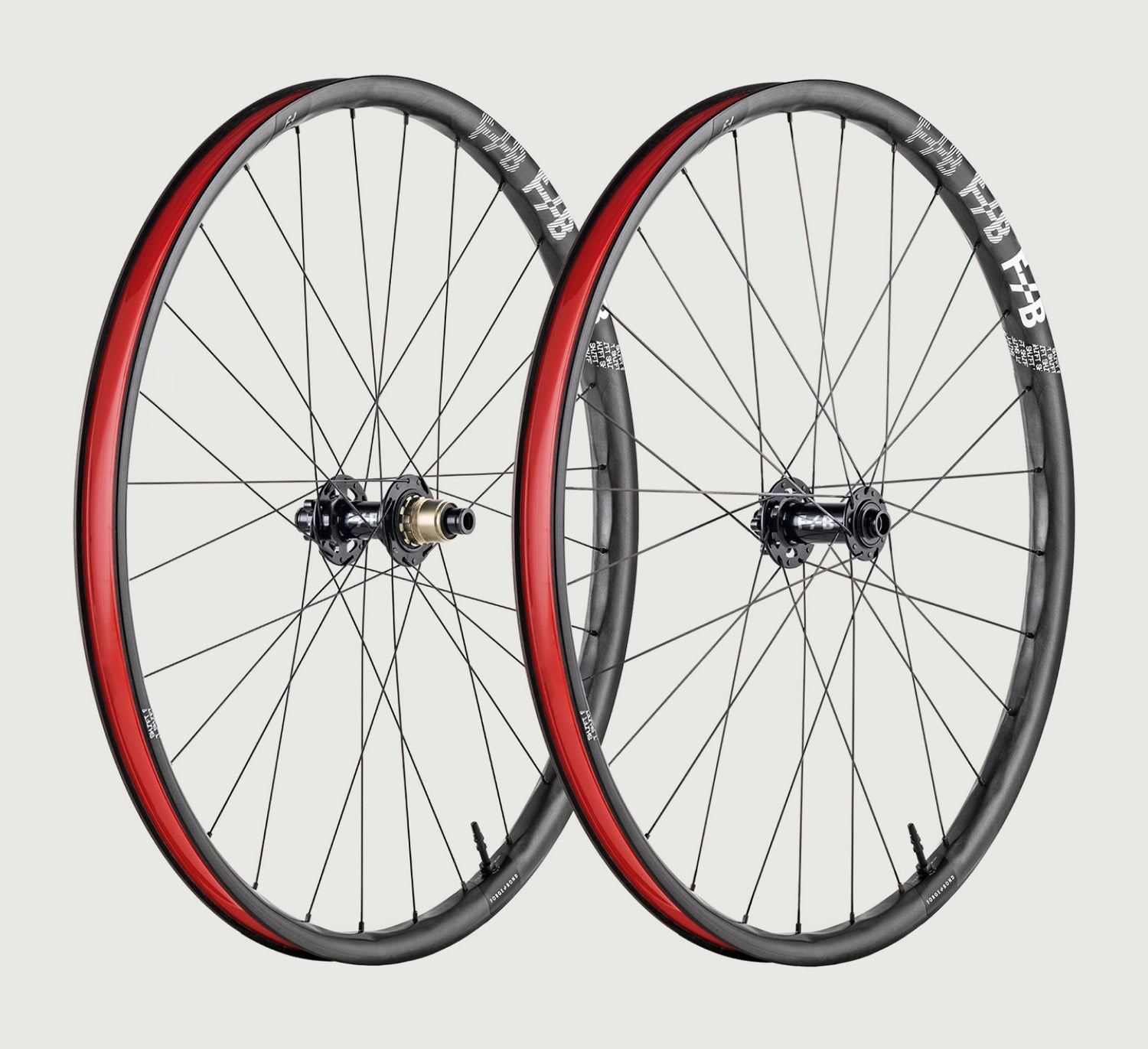
As an affiliate, we may earn from qualifying purchases. We get commissions for purchases made through links on this website. You can read more on our Affiliate Disclaimer here.
Mountain bike (MTB) spoke count typically ranges from 24 to 32 for most wheels. An appropriate spoke count depends on riding style and rider weight.
Mountain bikes are crafted for robust performance over rugged terrain, with spoke count playing a crucial role in overall wheel strength and durability. A higher spoke count often means a stronger, yet slightly heavier, wheel suited for aggressive riding or heavier riders.
Conversely, a lower spoke count can result in a lighter wheel, appealing to racers and those seeking speed over technical ability. It’s essential to choose a spoke configuration that balances the needs for resilience and weight, tailored to the individual’s requirements and the demands of their chosen trails.
Choosing the right MTB spoke count enhances the bike’s reliability and performance, ensuring a better and more confidence-inspiring ride on the most demanding off-road tracks.
Maximizing Your Mtb’s Potential
Your mountain bike is more than just a frame, two wheels, and components; it’s a symphony of parts working in unison. One often overlooked aspect is the spoke count of your MTB wheels.
This detail can dramatically affect your ride’s performance, durability, and how your bike handles the terrain. Understanding and choosing the right spoke count maximizes your MTB’s potential to tackle trails with confidence.
Factors Affecting Spoke Performance
Several key factors influence how your spokes perform. These include:
- Rider Weight: Heavier riders may require more spokes to distribute stress.
- Terrain: Rough trails demand stronger wheels, often with more spokes.
- Riding Style: Aggressive riding calls for a sturdier wheel build.
- Wheel Size: Larger wheels might need more spokes for added strength.
Spokes work in tension, much like cables on a suspension bridge. Correct spoke tension ensures your wheels are durable and responsive.
Choosing The Right Spoke Count
Picking the correct spoke count is crucial for an optimized ride. Here’s a quick guide:
| Riding Style | Spoke Count Range |
|---|---|
| Cross-country | 24-28 |
| All-mountain | 28-32 |
| Downhill | 32-36 |
The table displays basic guidelines, but your specific needs might vary. Consulting a bike fitting expert or an experienced mechanic can offer personalized advice.
Remember, a well-chosen spoke count adds not only to your wheel’s lifespan but also improves your overall riding experience.
The Science Of Spokes
Mountain bike (MTB) wheels are marvels of engineering.
At their heart, the spokes play a crucial role, balancing tension, strength, and flexibility.
Understanding the science behind spoke count can significantly improve your ride.
Spoke Anatomy 101
Let’s break down a spoke. A typical spoke has a head, nipple, and threaded body.
The head anchors at the hub, while the nipple adjusts tension at the rim.
- Head: Connects to the hub.
- Nipple: Allows tension adjustment.
- Threaded Body: Spans hub to rim.
How Spokes Affect Wheel Dynamics
Spokes are pivotal for wheel performance.
The right count impacts strength, weight, and responsiveness.
| Spoke Count | Impact |
|---|---|
| High | Increases strength |
| Low | Reduces weight |
More spokes mean more durability for tough trails.
Fewer spokes translate to a lighter wheel for quick climbs.
Low Vs. High Spoke Counts
Choosing the right spoke count on mountain bike wheels is crucial. It influences performance, weight, and durability. Do you know which is best for you? Let’s dive into the pros and cons of low versus high spoke counts.
Benefits Of Fewer Spokes
- Lighter Wheels: Less material means lighter weight.
- Improved Aerodynamics: Fewer spokes reduce drag.
- Modern Aesthetics: Sleek and minimalistic design.
- Stiffness and Responsiveness: Fewer, thicker spokes offer direct power transfer.
When More Is Better: High Spoke Advantages
High spoke counts have their place in trail and heavy-duty scenarios. They ensure reliability and sturdiness over rough terrain. Here’s why you might consider more spokes:
| Advantage | Description |
|---|---|
| Durability | Withstands impacts and distributes stress better. |
| Repairability | Easier to fix small issues without replacing the whole wheel. |
| Load Capacity | Carries heavier riders and equipment without compromising integrity. |
| Stability | Offers a more stable, forgiving ride on uneven surfaces. |
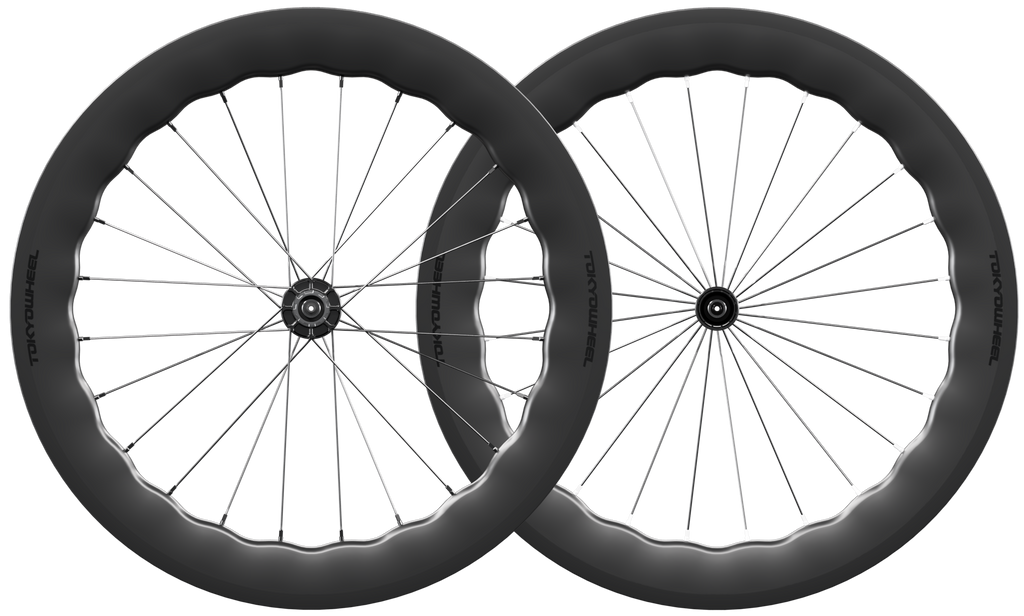
Credit: www.tokyowheel.com
Material Matters: Spoke Composition
Choosing the right spokes for a mountain bike wheel is a game-changer. Spokes hold wheels together and transfer a rider’s energy to the bike’s rims.
Different materials impact performance, weight, and durability. Let’s dive into the popular options and see what benefits they bring to your ride.
Comparing Steel And Alloy Spokes
Steel spokes are known for their strength and durability. They resist stress and stay true on rough trails. On the other hand, alloy spokes offer a lighter alternative. Lighter wheels mean quicker acceleration and easier climbs.
- Steel Spokes:
- High strength
- Good fatigue resistance
- Budget-friendly
- Alloy Spokes:
- Lightweight
- Improved riding dynamics
- Slightly higher cost
The Carbon Fiber Option
Carbon fiber spokes are a high-end choice, setting the bar for lightness and stiffness. These qualities amplify a bike’s responsiveness. Carbon fiber is ideal for racers and serious riders looking to shave off every possible gram.
| Spoke Type | Weight | Strength | Cost |
|---|---|---|---|
| Steel | Heavier | Very strong | Lower |
| Alloy | Light | Strong | Medium |
| Carbon Fiber | Lightest | Very strong | Highest |
Spoke Tension And Wheel Performance
Mountain bike wheel performance is critical for a smooth and safe ride. Spoke tension is key for durable and reliable wheels on various terrains. Correct spoke tension ensures that your wheels are strong, stable, and responsive. It contributes to the overall longevity of the wheel. Let’s explore how to tension spokes for an optimal ride and recognize signs of incorrect tension.
Tensioning Spokes For Optimal Ride
To achieve the best performance from your mountain bike, tuning spoke tension is essential. Here’s how:
- Check current tension using a spoke tension meter.
- Adjust evenly to prevent warping of the wheel.
- Refer to manufacturer’s specs for optimal tension values.
- Use a truing stand to monitor progress and maintain wheel shape.
Signs Of Incorrect Spoke Tension
A wheel set with improper spoke tension can lead to various issues. Be aware of these signs:
- Frequent breakages of spokes suggest too much tension.
- Loose spokes can lead to wobbly wheels.
- Untrue wheel indicates uneven tension across spokes.
- Pinging or popping sounds when riding may signal tension problems.
Credit: flowmountainbike.com
Impact Of Spoke Patterns
Impact of Spoke Patterns – Your mountain bike wheels’ strength, weight, and flexibility depend on how designers arrange the spokes. Each spoke pattern serves a special purpose. They affect your ride, from climbing steep hills to speeding down rugged trails. Let’s explore how different spoke patterns can tweak your cycling experience.
Standard Vs. Custom Spoke Lacing
Standard spoke lacing patterns offer a balance that works for most riders. These designs typically feature a set number of spokes, crossed in a specific way. They’re tested for all-around performance.
Custom patterns give you more control. You can fine-tune your wheels to match how you ride. Heavier riders might add more spokes for extra support. Racers may opt for fewer spokes to cut weight. Here’s a table comparing standard and custom lacing:
| Lacing Type | Spoke Count | Benefits |
|---|---|---|
| Standard | 28-32 | Durability, Reliability |
| Custom | Variable | Performance tuning, Weight savings |
Pattern Choices For Different Riding Styles
- Cross-Country: Fewer spokes, lighter wheels. Great for speed and climbs.
- All-Mountain: More spokes for rugged terrain. Balances weight and durability.
- Downhill: Max spokes for strength. Absorbs shocks from jumps and bumps.
Racers might aim for a radial pattern with minimal weight. Trail enthusiasts often choose a three-cross pattern for its blend of flex and tension. Adapting the spoke pattern to your style can enhance agility, control, and enjoyment.
Aerodynamics And Spoke Selection
Mountain biking thrives on speed and agility, making aerodynamics an essential aspect. Spoke selection significantly alters not just the look, but also how a bike cuts through air. Let’s dive into how the right spoke choices can enhance a bike’s aerodynamic efficiency and speed on the trails.
Spoke Shape And Wind Resistance
Spokes influence how wind hits and moves around a wheel. Round spokes, once the standard, are less aerodynamic. Their shape catches more wind, which creates resistance. Flat or bladed spokes, conversely, slice through the air with greater ease. This reduces drag and can lead to improved performance.
Aero Spokes For Speed Demons
For riders obsessed with speed, aero spokes offer a significant advantage. These spokes have a refined shape designed to maximize speed and minimize wind resistance. Here’s why they stand out:
- Reduced drag: Their slender, teardrop profile cuts through the air.
- Enhanced speed: Less resistance means faster acceleration and higher top speeds.
- Improved stability: Wind affects aero-spoked wheels less, granting better control at high speeds.
Choosing the right spoke shape depends on your riding style, speed goals, and trail conditions. While aero spokes are ideal for racing, they might not suit every rider’s needs or budget.
Each option has its trade-offs, but for those looking to give themselves a competitive edge, aero spokes could be a worthy investment.
Customizing Your Wheelset
Mountain biking is not just a sport; it’s a craft. One of the paramount ways to enhance your ride is by customizing your wheelset. Understanding the dynamics of mtb spoke count can transform your biking experience. It tailors the way your bike handles terrain, weight, and thrust. This customization offers unique wheel builds that cater to individual riding styles and needs.
When To Consider Custom Wheels
There are several instances where custom wheels could greatly improve your ride:
- Performance: Seeking optimization for speed, grip, or handling.
- Durability: Need wheels that endure specific terrain challenges.
- Weight: Adjusting the weight for better control and efficiency.
- Rider Style: Tailoring to your unique riding technique and preferences.
Diy Or Professional Build: What To Choose
The decision between a DIY build or a professional one hinges on a few key factors:
| DIY Build | Professional Build |
|---|---|
| Cost-effective, personal accomplishment | Precision and technical expertise |
| Custom learning experience | Convenience and time-saving |
| Hands-on control over components | Access to advanced tools and materials |
Maintaining Your Spokes
Maintaining your bike’s spokes is crucial for optimum performance and safety. Spokes play a vital role in keeping your wheels round, true, and strong. Proper care ensures your MTB is ready for any trail adventure.
Routine Spoke Care Tips
To keep your MTB wheels spinning smoothly, regular spoke maintenance is key. Here’s a list of easy care tips:
- Check tension regularly: Use a spoke wrench for adjustments.
- Clean your spokes: Wipe them down to prevent rust.
- Listen for sounds: Clicking or creaking may indicate issues.
Always inspect before rides: Quick checks prevent long-term damage.
If you’re unsure about proper tension, consult a professional. They can ensure your MTB spokes are in the best condition.
Troubleshooting Common Spoke Issues
Despite good care, spoke problems can still surface. Recognizing and resolving these issues early is crucial:
| Issue | Symptom | Quick Fix |
|---|---|---|
| Loose Spokes | Wobbling wheel | Tighten with a spoke wrench |
| Broken Spokes | Noticeable gap | Replace the spoke |
| Corrosion | Rust or discoloration | Clean and lubricate |
For serious issues, take your MTB to a bike shop. Experts handle complex repairs well.
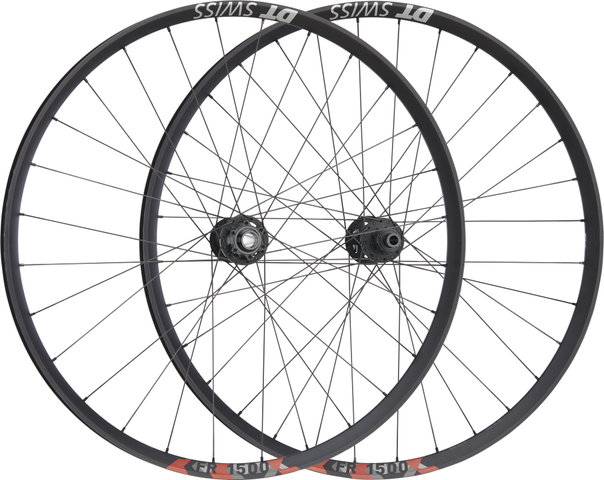
Credit: www.bike-components.de
Real Riders, Real Results
Real Riders, Real Results: Exploring how the spoke count on mountain bike wheels impacts performance is more than just theoretical. Real riders testing different spoke configurations offer valuable insights. They provide practical evidence that can guide our choices on the trails.
Case Studies Of Spoke Count Changes
Examining real-world examples sheds light on the impact of spoke count adjustments.
- Amy’s Alpine Adventures: Switching from 32 to 24 spokes, Amy noted better climbing efficiency.
- Bob’s Downhill Thrills: Going from 24 to 32 spokes, he felt increased stability on rough descents.
These transformations highlight the spoke count’s role in ride quality.
Expert Opinions On Spoke Configurations
Well-respected riders and mechanics share their perspectives.
| Expert | Configuration | Insights |
|---|---|---|
| Jane Smith | 28 spokes | Balanced for mixed terrain |
| John Doe | 36 spokes | Best for high-stress rides |
Such firsthand accounts underline the necessity for careful spoke selection.
Frequently Asked Questions On Mtb Spoke Count
How Many Spokes Should A Mountain Bike Have?
Mountain bikes typically have 24 to 32 spokes per wheel. The exact number depends on the bike’s design and intended use. Fewer spokes are common for light terrain, while more spokes provide strength for rougher trails.
What Is The Spoke Count For Mtb Hubs?
MTB hubs typically feature a spoke count ranging from 24 to 36 spokes, accommodating various riding styles and terrain challenges. The choice of spoke count depends on rider preference for strength and wheel weight.
Is 24 Spokes Enough?
Yes, 24 spokes are enough for cyclists who prioritize lightweight wheels and have a lighter riding style on smoother terrains. For heavier riders or rough terrain, more spokes may offer better durability and strength.
Conclusion
Selecting the right spoke count for your mountain bike wheels is essential for both performance and durability.
A balance must be struck; too few spokes can lead to weakness, too many, and you add unnecessary weight. Tailor your choice to your riding style and enjoy the trails with confidence.
Happy riding!

We are Louisa & Tobi aka chainsandchords, a couple from Germany, and we are currently cycling around the world with our guitars! Louisa was born and raised in Dortmund. Tobi was born in the US but grew up moving around with his family to Germany, Australia & China.


